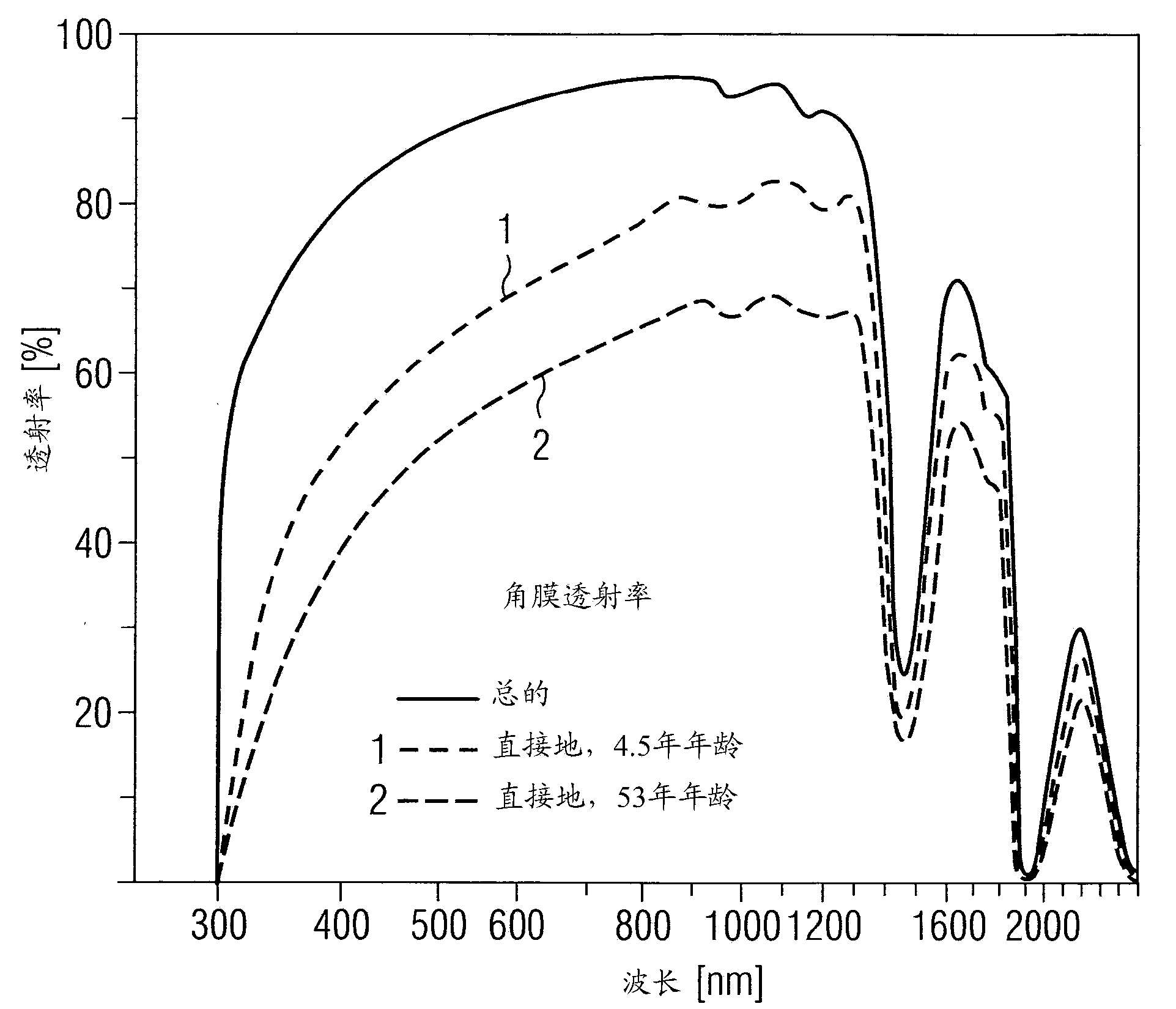Apparatus and method for optical coherence tomography
A technology of optical coherence tomography, equipment, applied in the direction of using optical devices, eye testing equipment, applications, etc., can solve complex problems
- Summary
- Abstract
- Description
- Claims
- Application Information
AI Technical Summary
Problems solved by technology
Method used
Image
Examples
Embodiment Construction
[0038] figure 1 It is shown that the transmittance or transmittance of the cornea of the human eye develops to more than 60% in a wavelength range greater than about 325 nm, and drops strongly (by starting band absorption) at shorter wavelengths. Therefore, the use of wavelengths of about 300 nm or less is restricted. It has been found that the scattering properties of the cornea in the range exceeding 300 nm to 500 nm are particularly advantageous, which results in a high signal intensity of the measurement beam deflected (scattered) by the biological tissue.
[0039] figure 2 Illustrate the axial resolution Δz of the OCT measuring device and the center wavelength λ of the wavelength spectrum of the optical radiation used by the equation (1) 0 And the relationship between the spectral width Δλ. in figure 2 It can be seen that the wavelength λ in the range of 300 to 500 nm 0 Compared with wavelengths in the range of more than 800nm, a larger axial resolution (smaller axial re...
PUM
 Login to View More
Login to View More Abstract
Description
Claims
Application Information
 Login to View More
Login to View More - R&D
- Intellectual Property
- Life Sciences
- Materials
- Tech Scout
- Unparalleled Data Quality
- Higher Quality Content
- 60% Fewer Hallucinations
Browse by: Latest US Patents, China's latest patents, Technical Efficacy Thesaurus, Application Domain, Technology Topic, Popular Technical Reports.
© 2025 PatSnap. All rights reserved.Legal|Privacy policy|Modern Slavery Act Transparency Statement|Sitemap|About US| Contact US: help@patsnap.com



